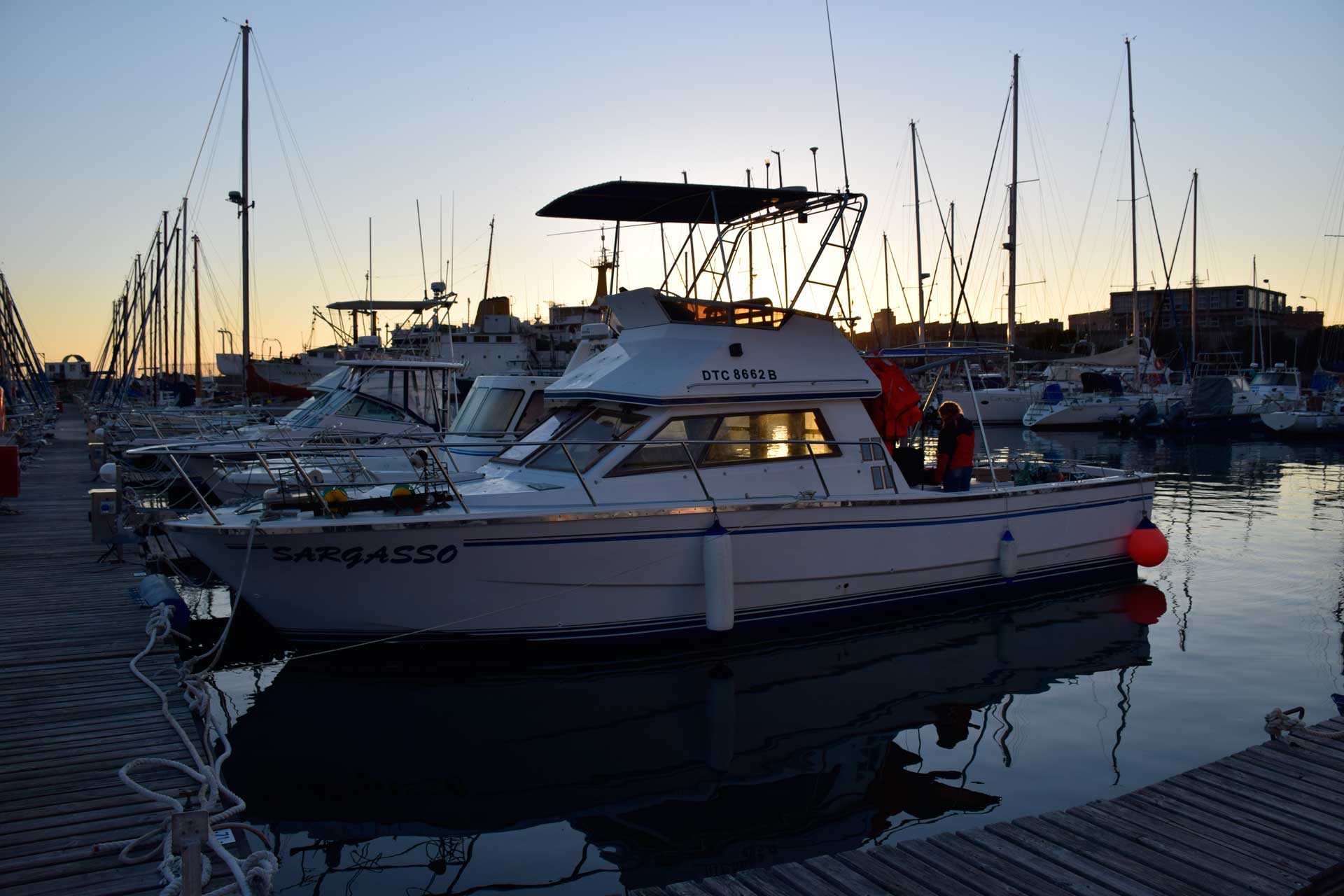A Day Aboard Sargasso
Dawn peeks shyly over the mountains that rise above the sea to the east of False Bay and a few pink streaks stretch lazily over the small towns of Gordon’s Bay and Rooi Els. The lights of the houses still twinkle in the sea mist that has gathered in soft, curtain-like folds at the foot of the mountains. The night’s chill lingers above the water and as the bow of our research vessel Sargasso breaks the surface, the sea sighs and rolls, its reluctance to shake awake mirroring my own barely stifled yawns. The sleepy murmurs of my crew, clutching mugs of steaming coffee, are only just audible above Sargasso’s growling motors: we’ve been at this so long that we’ve grown comfortable in our routine, her rather husky morning voice even matching my own (alright – only to an extent, and with some poetic licence …)
Sargasso from Lauren De Vos on Vimeo.
I step outside the cabin to scan the horizon for clouds or fog, bracing myself for the sting of saltspray on my face. Surprisingly, the sea seems peaceful today: my legs stand sturdy on the rolling deck and there is no trace of that familiar undercurrent of nausea that has become synonomous with working in the heaving swell and disorientating chop that has characterised False Bay’s conditions throughout my PhD. Could it be that False Bay and I have finally, on one of my last days in the field, reached an uneasy truce? More likely, I think, is that she is teasing me. I’ve come to know her capricious temperament well, and know that there is no deal-making with the sea. I cast my glance over her waters, still inky with an oily sheen in the reluctant light, and think wryly to myself: “It’s only because she knows I’ve brought a camera with today. Typical”.

Photo by Ray Chaplin
With a sigh, I shake my head at the bay that has led me a merry dance for nearly three years. In the end, I’d always known she’d have it her way. “Fine,” I narrow my eyes and make my voice stern: “If this is how you want to be remembered on film, so be it. I still have my pen, and can always write about you however I like”. There’s a sudden slosh! as Sargasso lists dangerously to one side, and I hear a coffee mug crash to the floor in the cabin. “Okay, okay,” I hasten to add a disclaimer: “That’s not to say I will write about you,” and with a hint of defiance, “only that, I could if I wanted to”. The boat rolls back into a settled steam and someone shouts out that dolphins have been sighted. Turning slowly back to my work, I can’t help but cast one last, knowing smile to the sea. In a highly unscientific moment, I swear I see the water twinkle mischievously back at me. It might not be the easiest relationship, but I think we might finally have reached some sort of understanding.

Photo by Ray Chaplin
I completed my field data collection earlier this year, a process which has taken over two years of frustration and small triumphs. It’s almost inevitable that only a few weeks after settling Sargasso on her moorings for the last time, I’d be restless at my desk and longing for the scent of kelp in the mornings. In the office, my summer freckles fade as quickly as the memories of broken winches and seasickness. Of course, the only real records of my field time are similarly rose-tinted: the only time we have to whip a camera out to document one another is when conditions are good enough not to require all hands on deck! None the less, I feel it’s fitting that this little video insight into one day at sea aboard Sargasso matches that nostalgic feeling that always catches me once I’m landbased. It’s what keeps me coming back for more …
